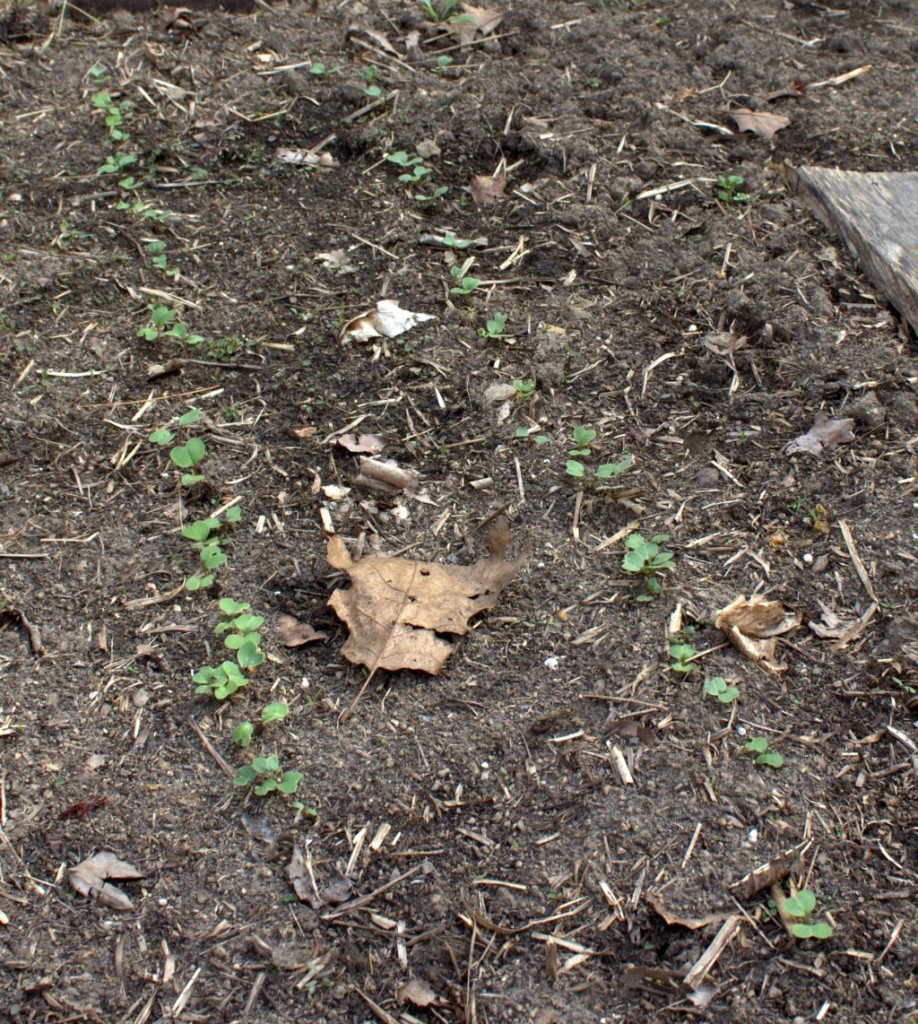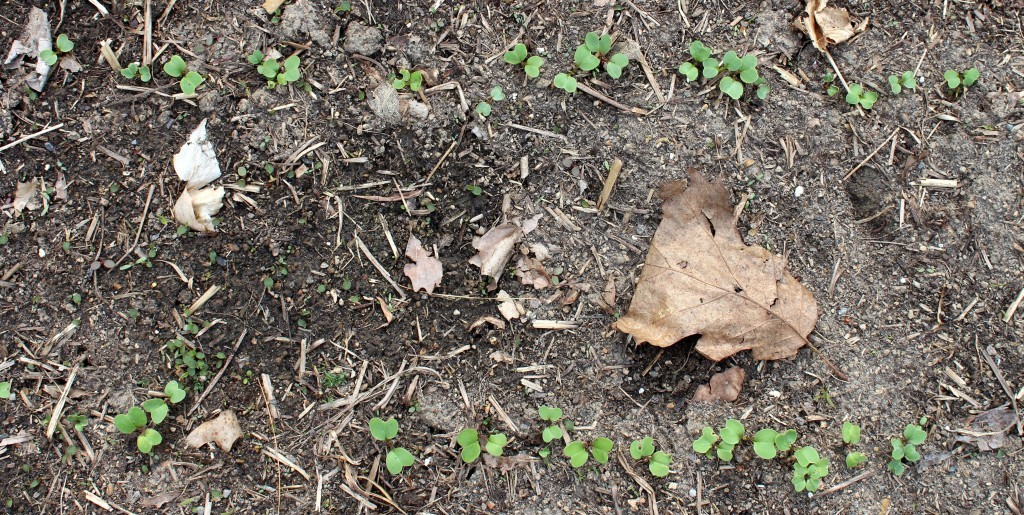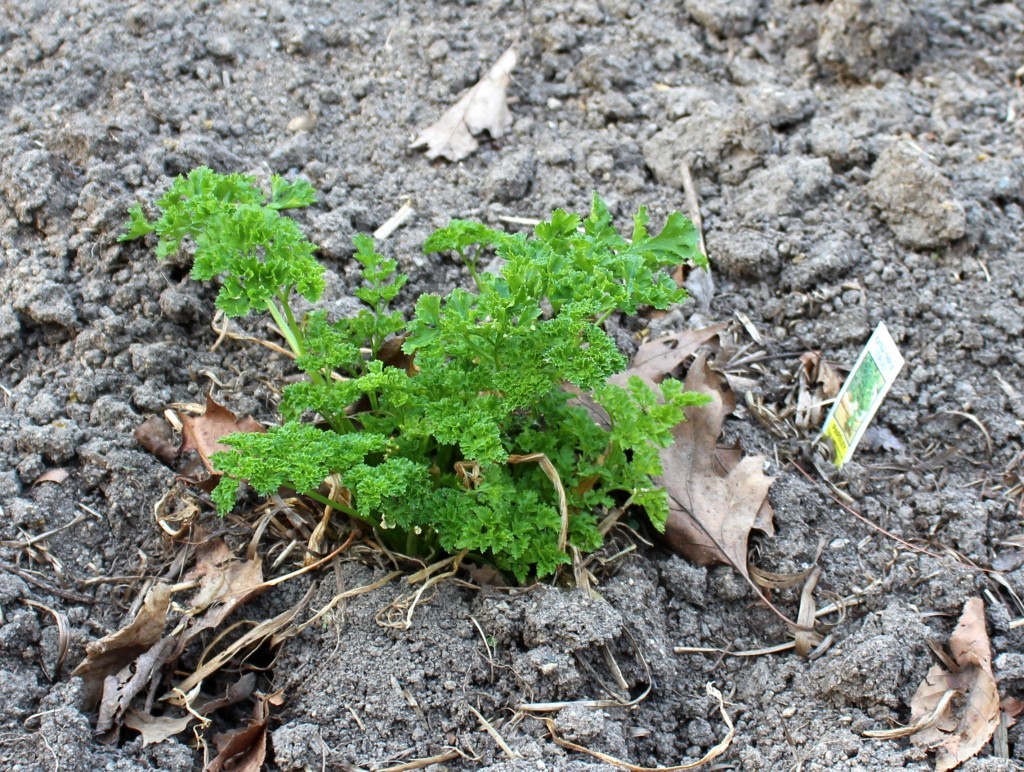About a week ago I planted some old radish seeds in a couple of short rows in the garden. Happily, they all seem to be sprouting up!

The seeds were more than a couple of years old, so I was pleasantly surprised to see the sprouts emerge from the cold ground. The seed packets of radishes were at least 4-5 years old, maybe older.
Last year the original seed packets had gotten wet, so the remaining dry seeds were placed into new envelopes and labeled. Each envelope was labeled as to type and origin, but not the year they were packed for so I can’t say for certain how many years old the seeds were.
I figured it was early enough in the growing season to be able to plant some of these seeds — even though I thought they were too old — just to see what developed. If nothing much was sprouting, I would still have time to buy other radish seeds for the garden this Spring.
The fact that so many seeds germinated tells me that radish seeds can be kept more than three years.
I found this was not so with snow pea seeds. They are only good for about 2 years.
Two radish varieties were sown. The upper row in the photo below are red globe or cherry type of radish (Ferry Morse). The kind that develops into a cherry-sized bulb with a bright red outside. The “meat” inside is white.

The radish sprouts in the lower row are an icicle variety. The bulb or radish shape is not round, but rather elongate, like a carrot. These sprouts will become white icicle radishes (John Scheeper’s).
The next thing to do for the radishes is to thin them out to about two inches apart. Then, some straw or mulch will be put down to keep them moist.
